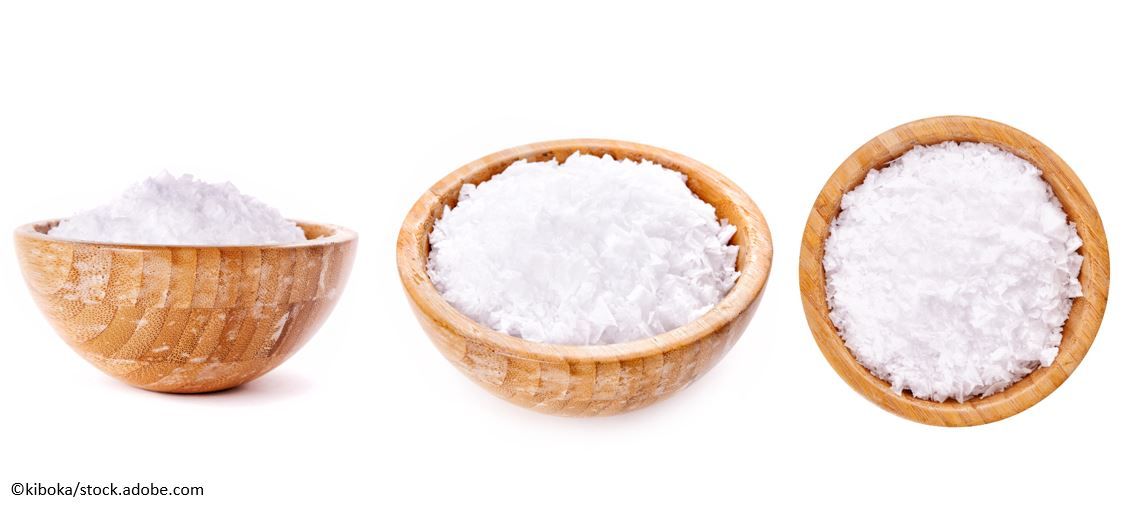- Clinical Technology
- Adult Immunization
- Hepatology
- Pediatric Immunization
- Screening
- Psychiatry
- Allergy
- Women's Health
- Cardiology
- Pediatrics
- Dermatology
- Endocrinology
- Pain Management
- Gastroenterology
- Infectious Disease
- Obesity Medicine
- Rheumatology
- Nephrology
- Neurology
- Pulmonology
Lowering Daily Sodium Intake May Reduce AF Risk in Vulnerable Adults
An analysis of 28 000 adults with vascular disease and high-risk diabetes found daily sodium intake of ≥8 g significantly increased risk for AF by 32%.
The benefits of lowering sodium intake to prevent atrial fibrillation (AF) in adults with vascular disease or high-risk diabetes were most pronounced in individuals who consumed more than 6 g/day, according to an analysis published in JAMA Network Open.
Among those consuming sodium in excess of 6 g/day researchers reported a 10% increase in risk for AF for each additional gram of sodium intake, reflected in an independent J-shaped association between intake and incidence of AF. For adults whose daily intake of sodium exceeded 8 g/day the international team's analysis revealed a statistically significant 32% increase in risk for AF.

The J-shaped association between sodium intake and cardiovascular (CV) outcomes is widely reported in the literature, Linda S. Johnson, MD, PhD, an associate professor in the department of clinical sciences at Lund University in Sweden, and colleagues wrote. In those prospective cohort studies, an increased risk of CV disease, heart failure, or death was seen at daily sodium consumption levels of less than 3 g/day and greater than 5 g/day. There is little published data, however, on the association specifically between sodium intake and AF.
Johnson et al evaluated the association between estimated daily sodium intake, obtained from fasting morning urine samples, and incident AF in high-risk adults without previous AF. They also analyzed whether any association between AF and sodium intake was modified by either systolic blood pressure (SBP) or prevalent hypertension.
The study cohort included participants in the Ongoing Telmisartan Alone and in Combination with Ramipril Global Endpoint Trial (ONTARGET) and Telmisartan Randomised Assessment Study in ACE Intolerant Subjects with Cardiovascular Disease (TRANSCEND) multicenter, randomized clinical trials. The 31 546 participants across the 2 studies had either prevalent vascular disease or high-risk diabetes and data for a fasting morning urine sample for sodium measurement. In both original trials, AF was a prespecified secondary endpoint and records were available for all incidents.
The population for the final study analysis included 27 391 participants (70.5% men) who had a mean age of 66.3 years.
FINDINGS
The mean estimated sodium intake was 4.8 g/day in the population overall, 4.9 g/day among men, and 4.4 g/day among women. During mean follow-up of 4.5 years, incident AF was observed in 5.7% of participants.
Daily sodium intake of 4.00 g to 5.99 g was designated as the reference category. After performing multivariable adjustment, the investigators observed a J-shaped association between sodium intake and AF risk. They found intake of 8 g/day or more (3% of participants) was significantly associated with a 32% increased risk of incident AF (hazard ratio, 1.32; 95% CI, 1.01-1.74) compared with sodium intake of 4 to 5.99 g/day.
Further analysis revealed that sodium intake of 6 g/day or more, consumed by 19.1% of participants, was associated with a 10% increased AF risk per additional 1-g/day sodium intake (HR, 1.10; 95% CI, 1.03-1.18), but with no further lowering of AF risk at lower levels of sodium intake, the authors wrote.
More than two-thirds (69.0%) of the study cohort had a daily sodium intake between 3.00 g and 5.99 g but investigators found no association of increased sodium intake with incident AF, according to the study.
Among individuals with hypertension, the association between sodium intake and incident AF was independent of SBP, Johnson and colleagues reported. The link between sodium consumption and AF was observed to be more pronounced among participants in both studies taking diuretics, however, and particularly among those with no history of hypertension.
“Current guidelines recommend lowering sodium intake to a goal of between less than 1.50 g/day to less than 2.40 g/day. Our study found no evidence to support low sodium intakes (less than 3.00 g/day) compared with moderate levels (ie, at the population mean of 3.00-5.00 g/day), and there may be a higher risk of AF with low compared with moderate sodium intakes,” researchers said.
Among the study’s key limitations Johnson and colleagues point to the likelihood that use of the Kawasaki formula to estimate sodium intake from morning urine overestimated intake compared with 24-hour urine collection, deemed to be unfeasible in a study of the current size. An overestimation would “imply that the risk of AF increases at a lower sodium intake than we report, probably between 4.50 and 5.50 g/day.”
Overall, the team states that the J-shaped association found in their study suggests that reduced sodium intake as a means of lowering risk for AF is probably best for individuals whose dietary sodium intake is high.
They also concluded that the findings "suggest a need for trials testing effects of both high and low vs moderate sodium intakes with the use of intermediate biomarkers of AF risk and ideally long-term trials of new AF in patients at high risk.”
